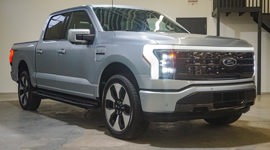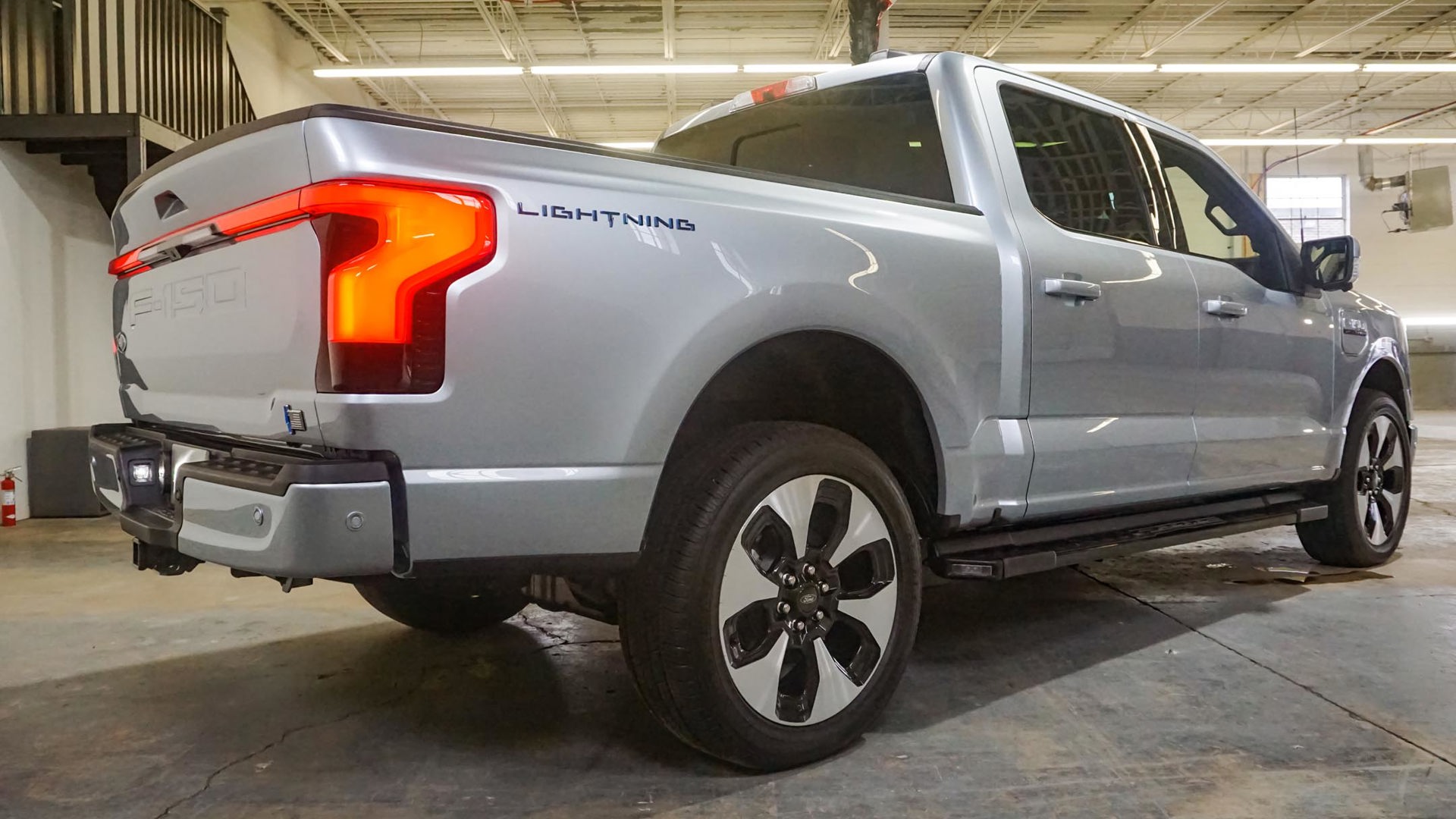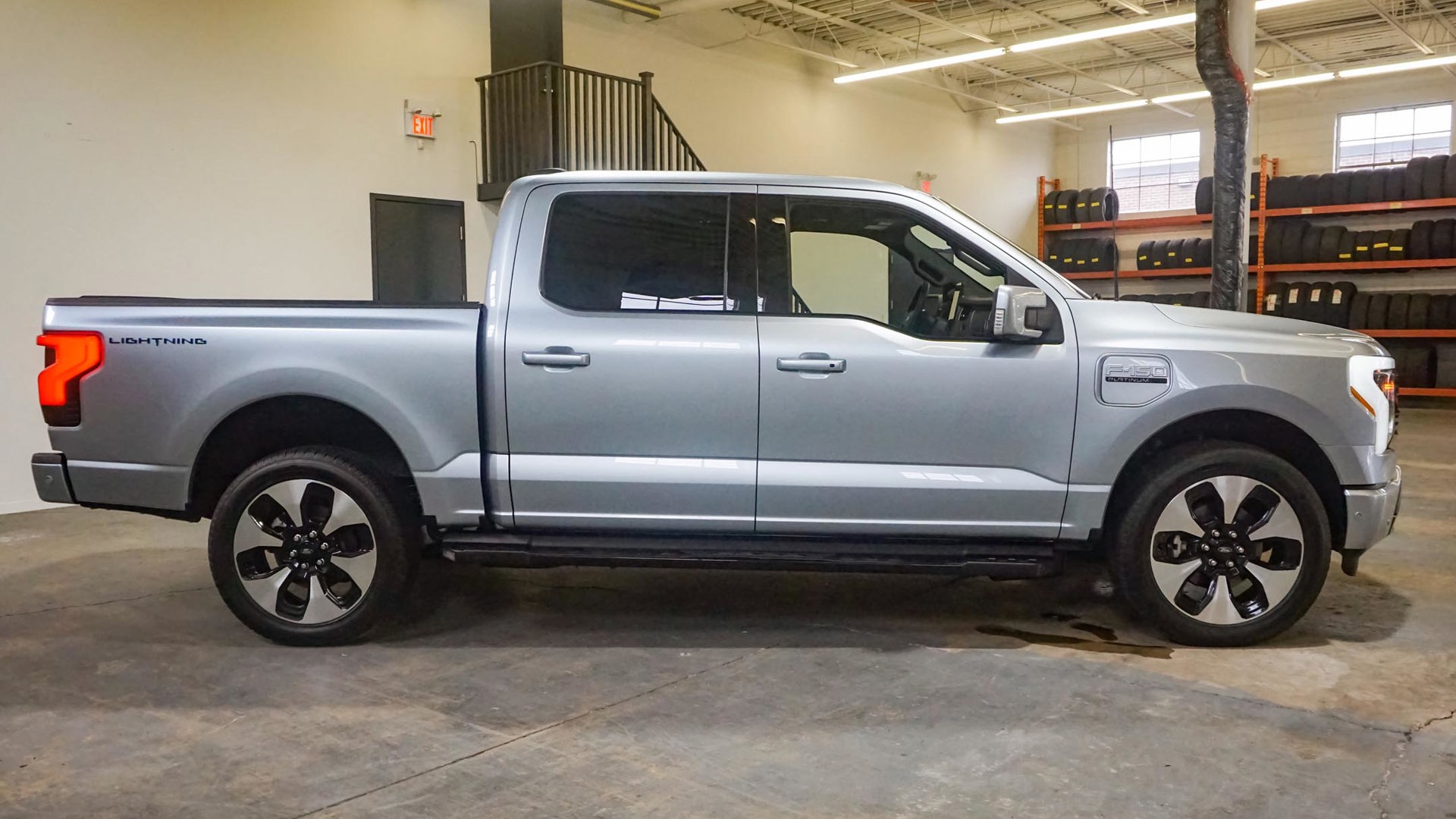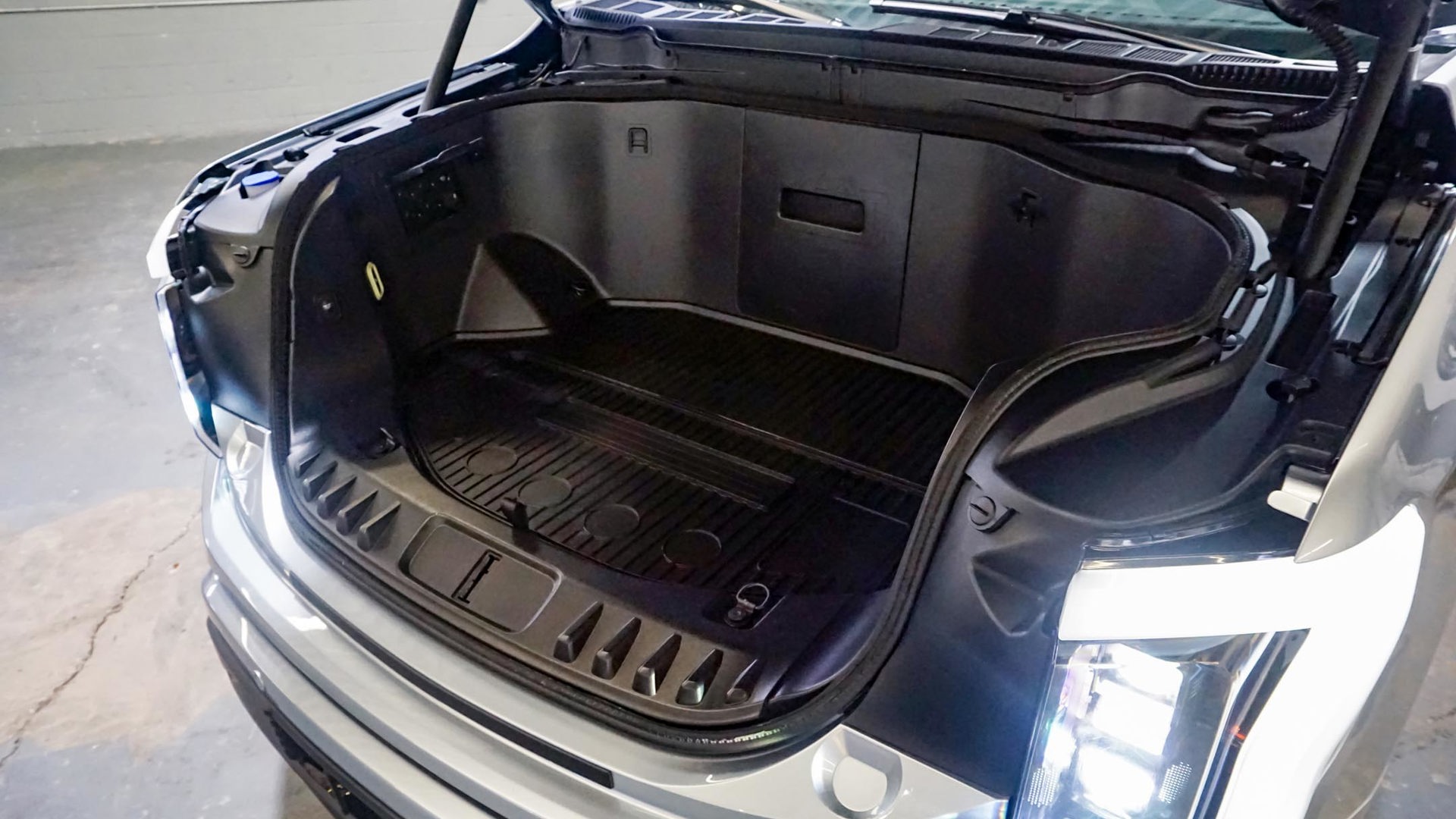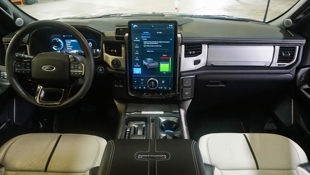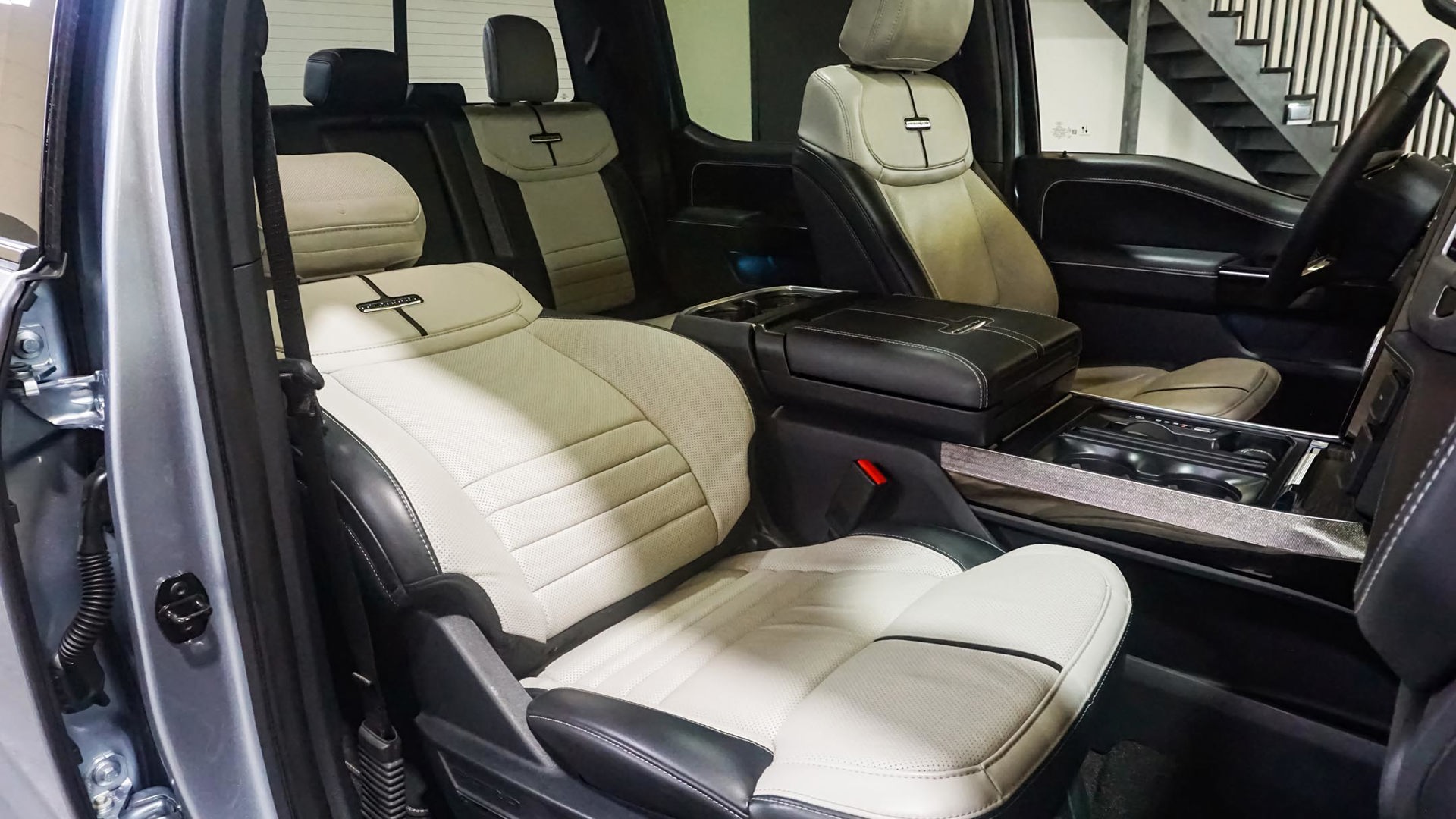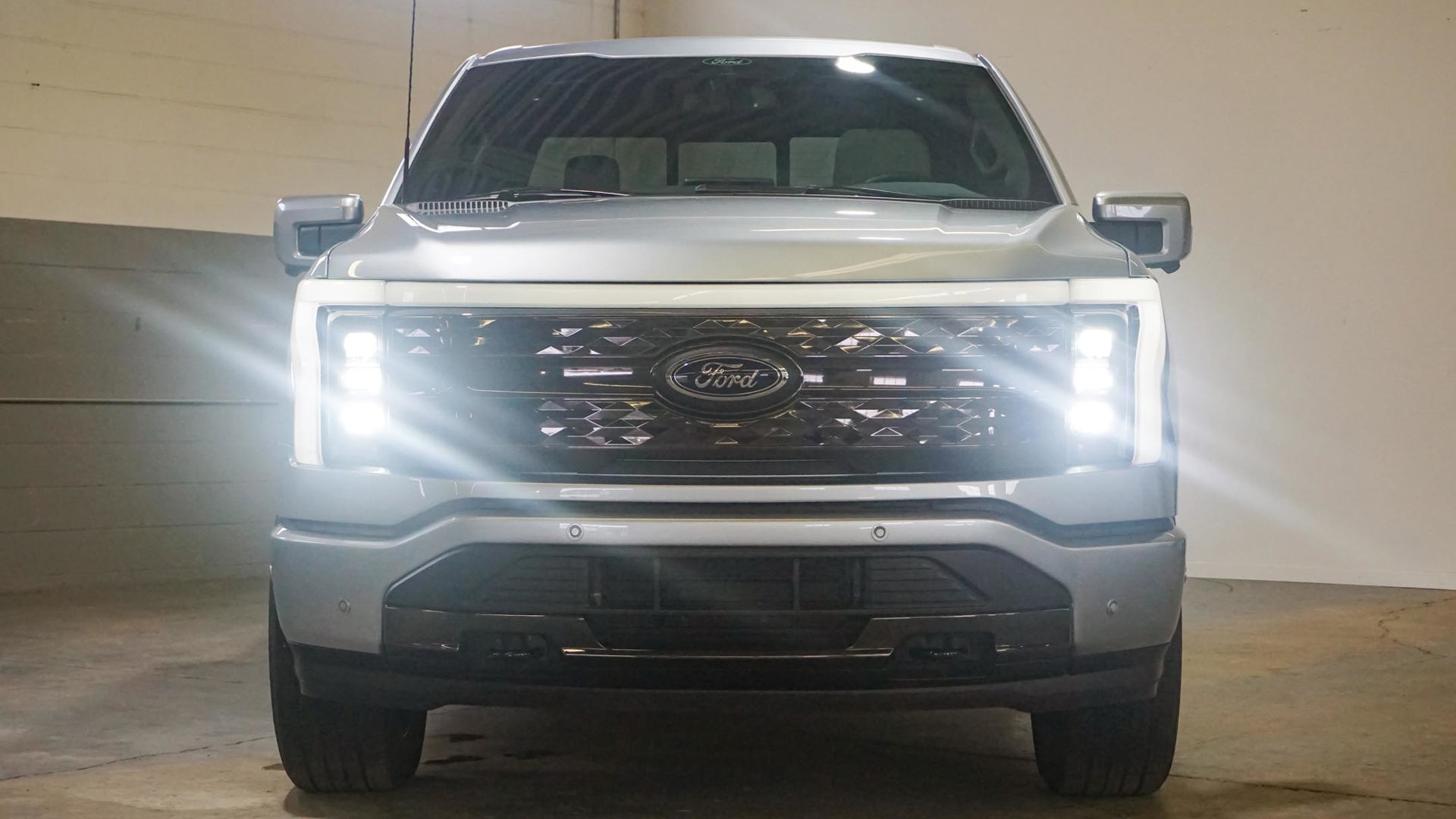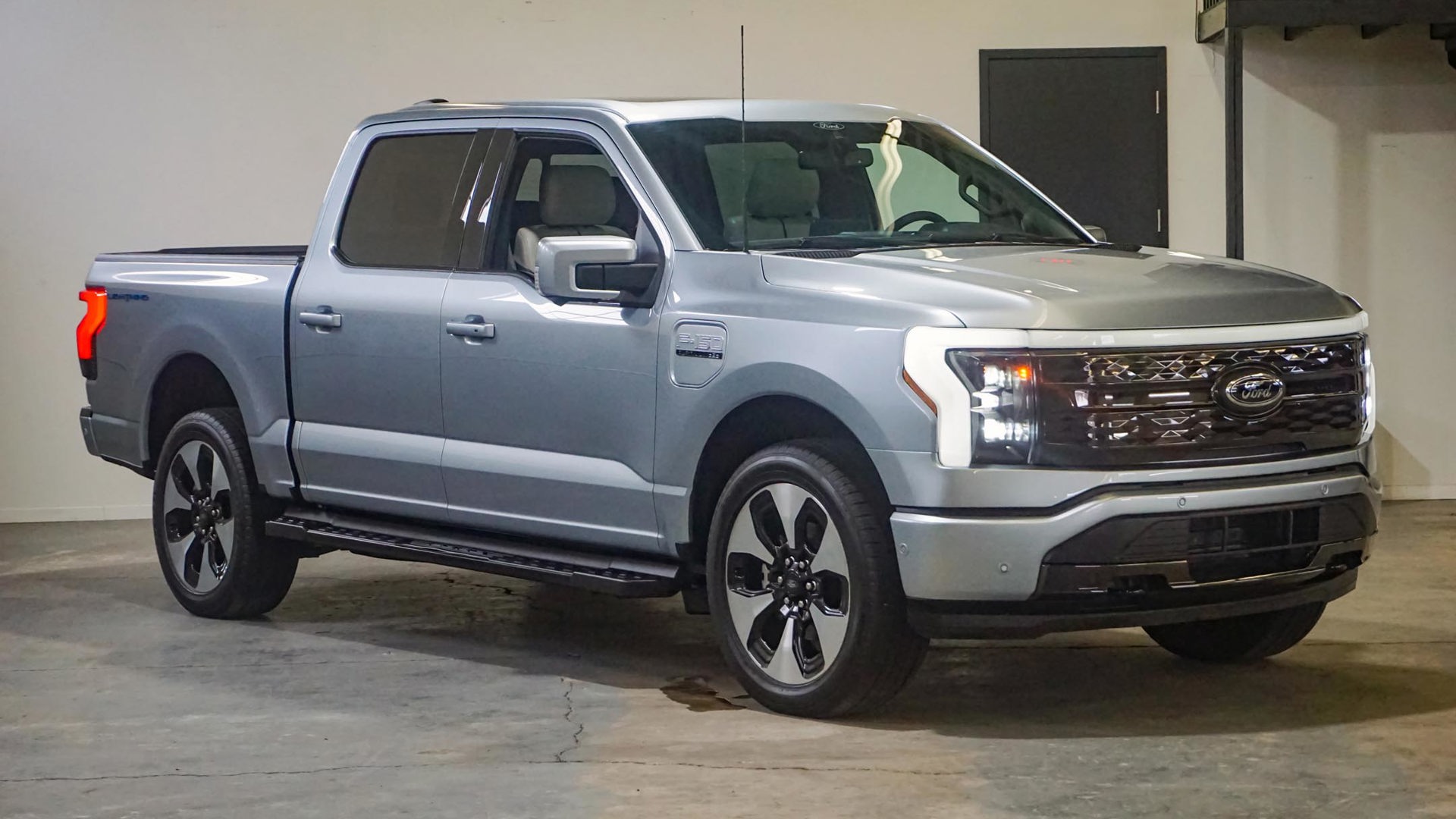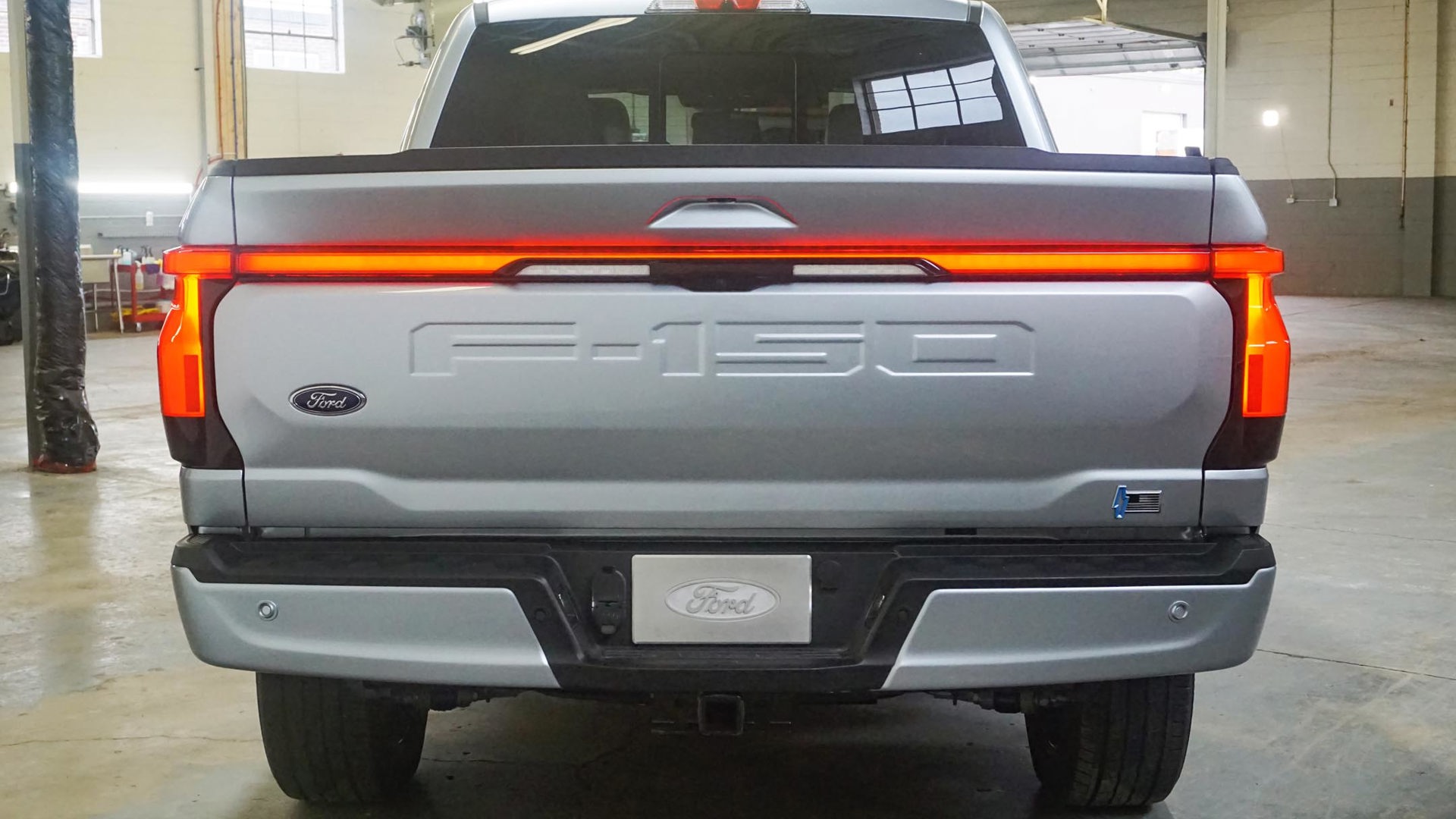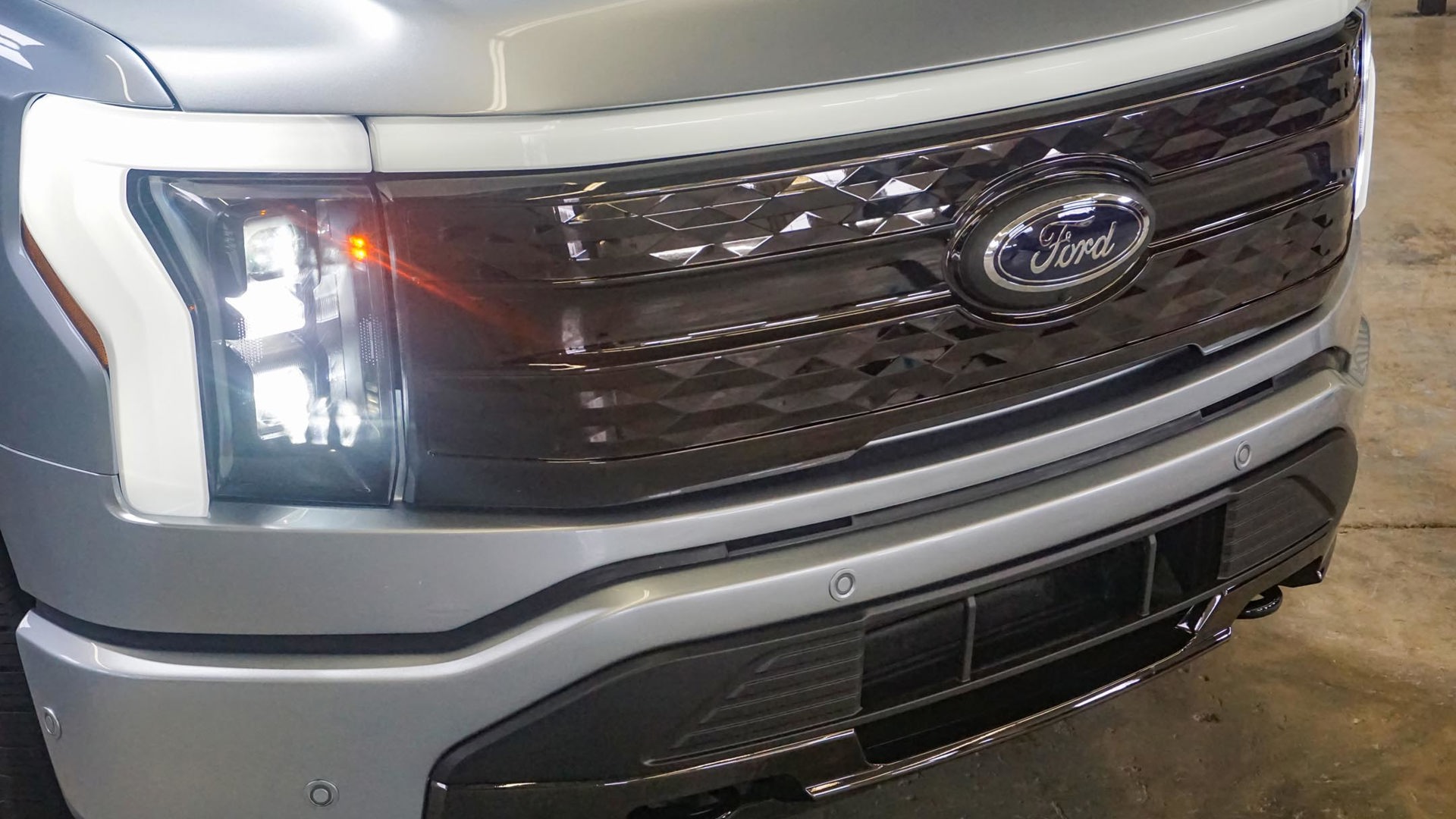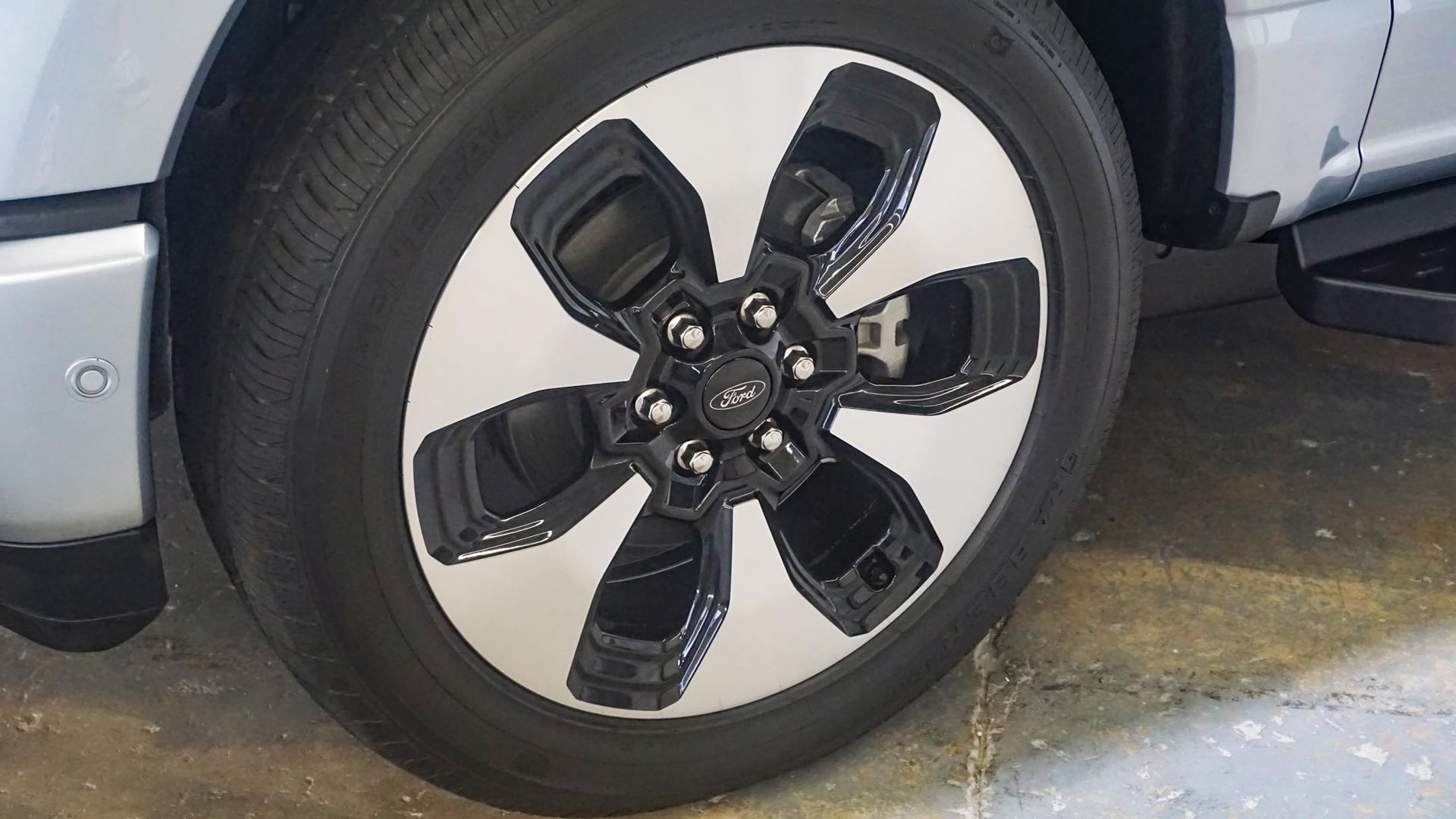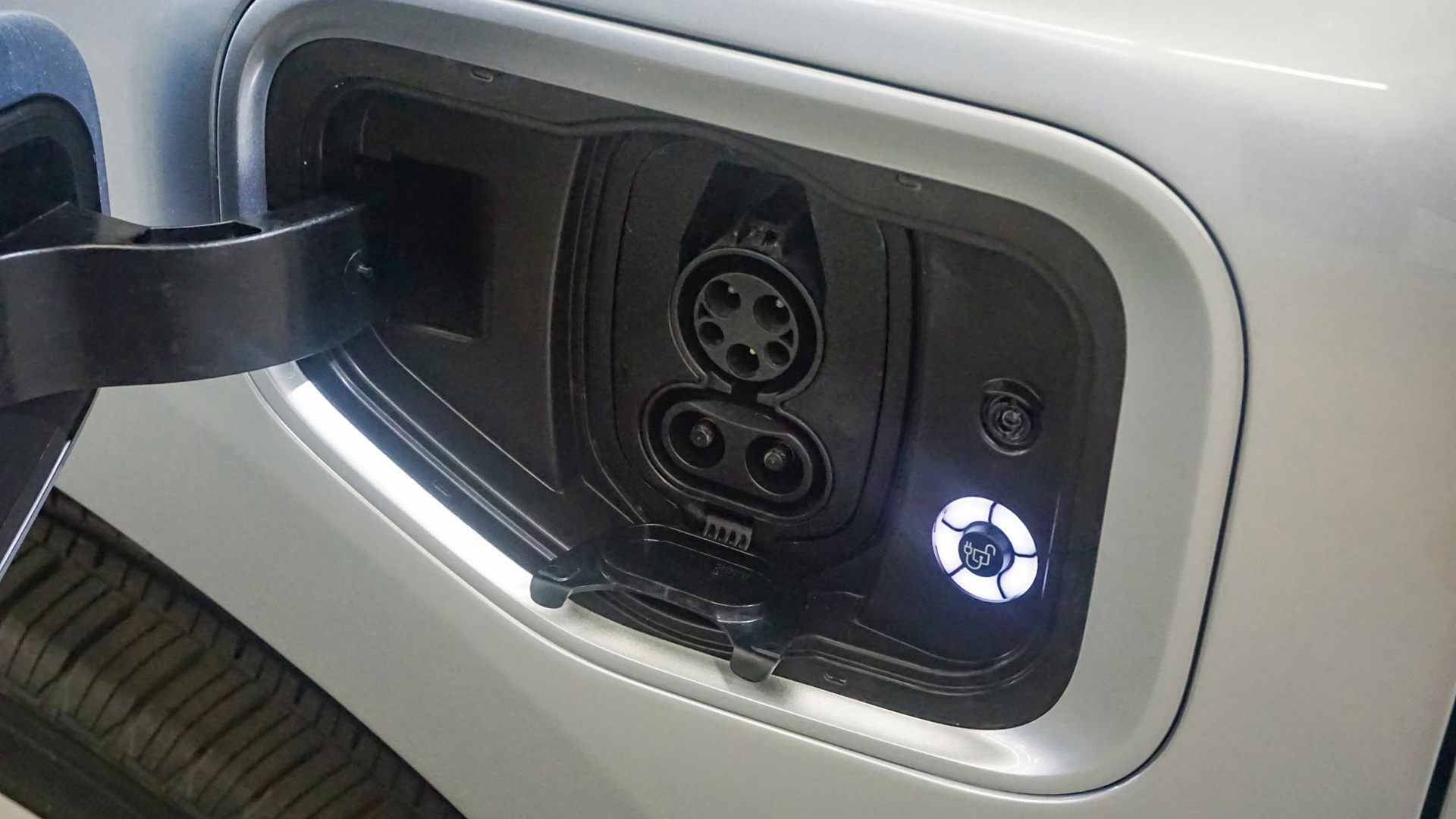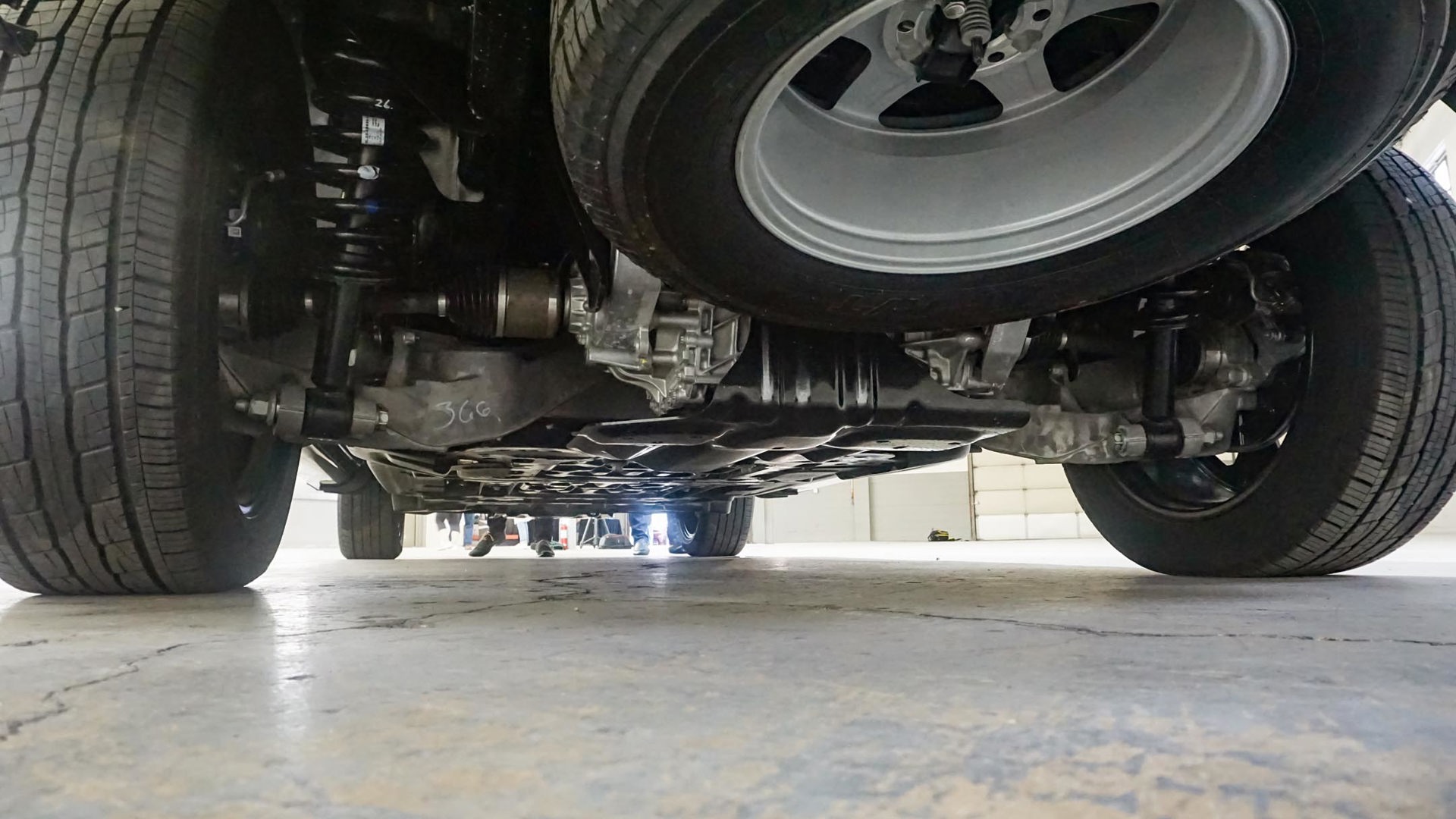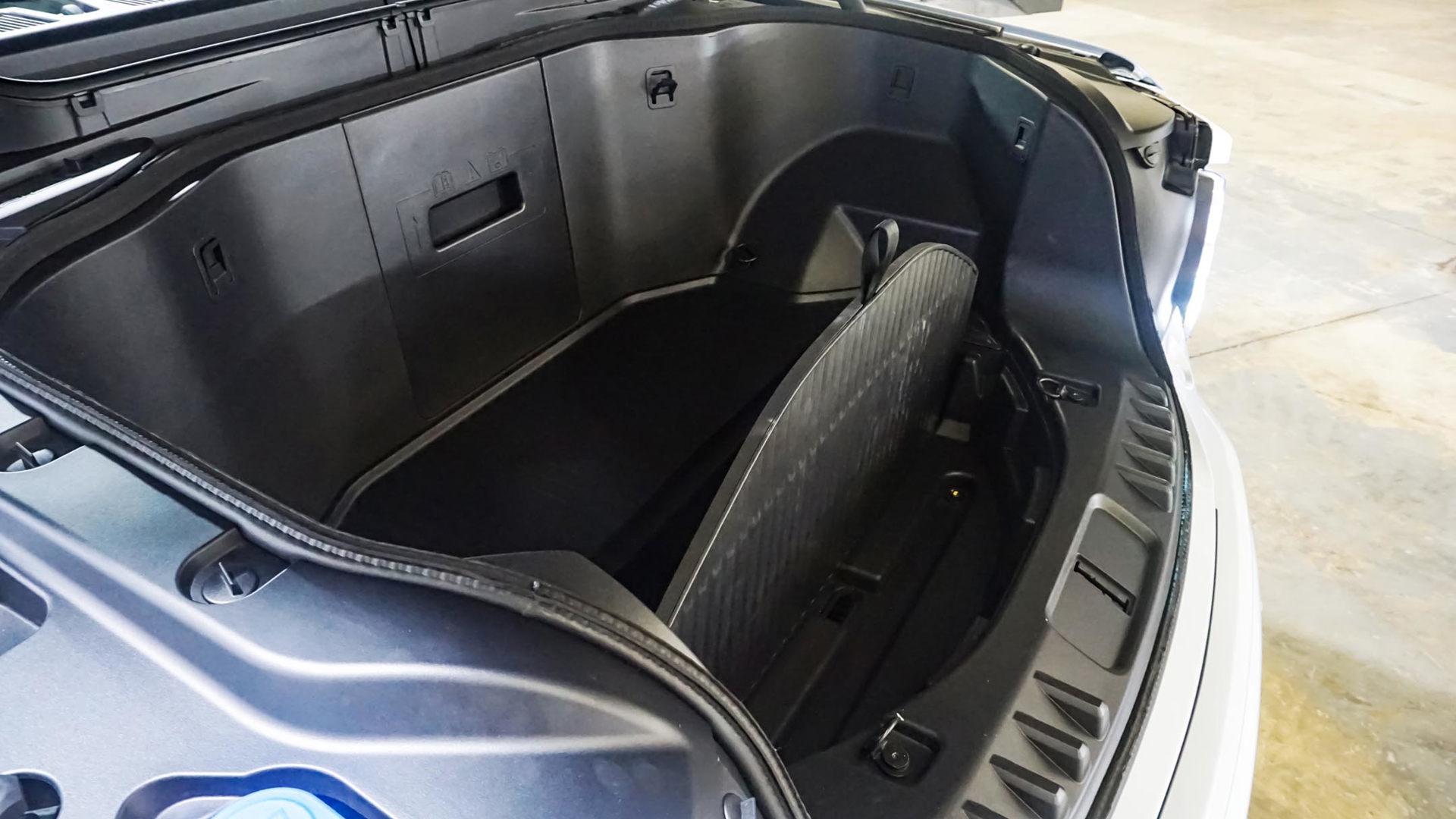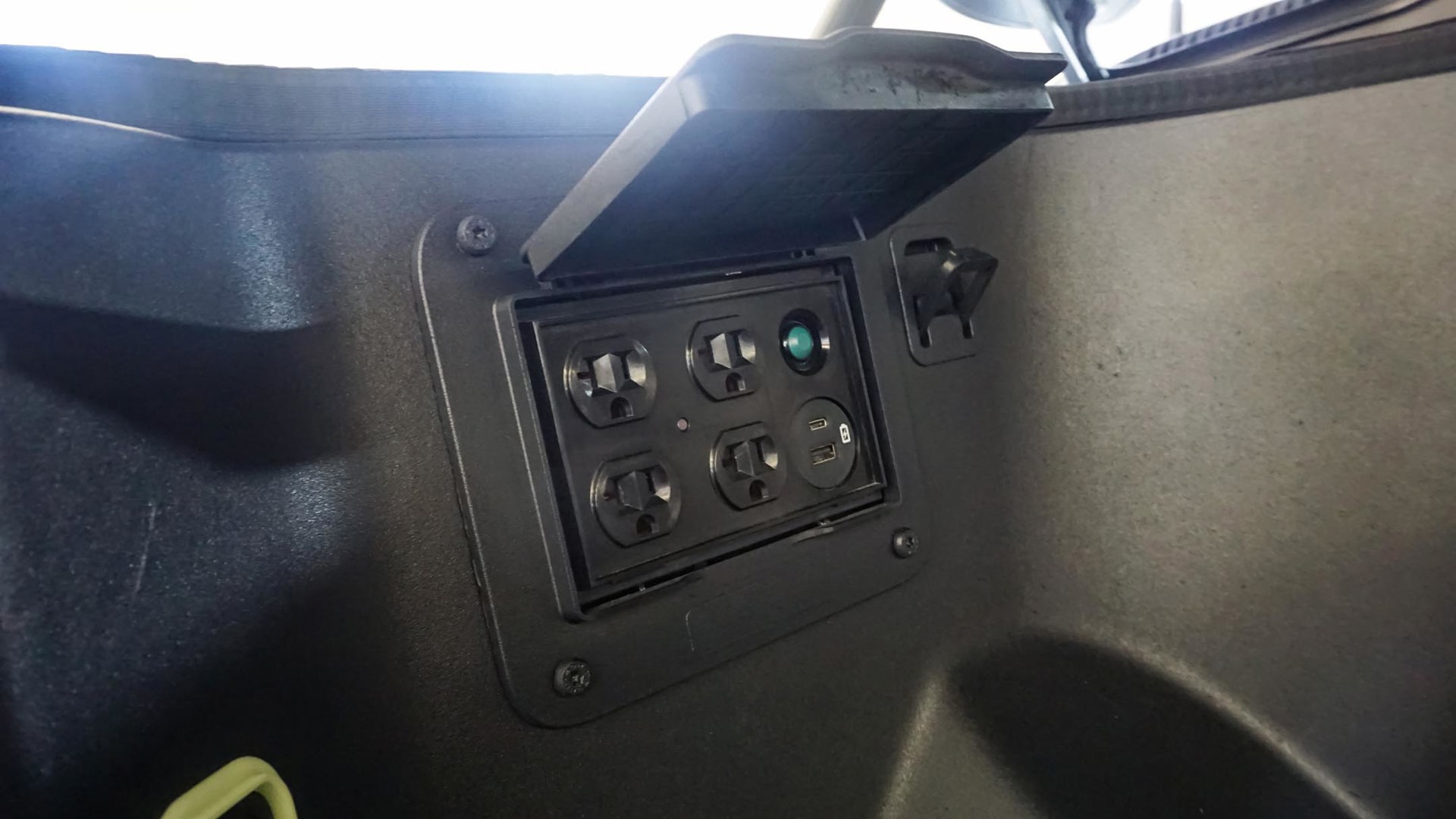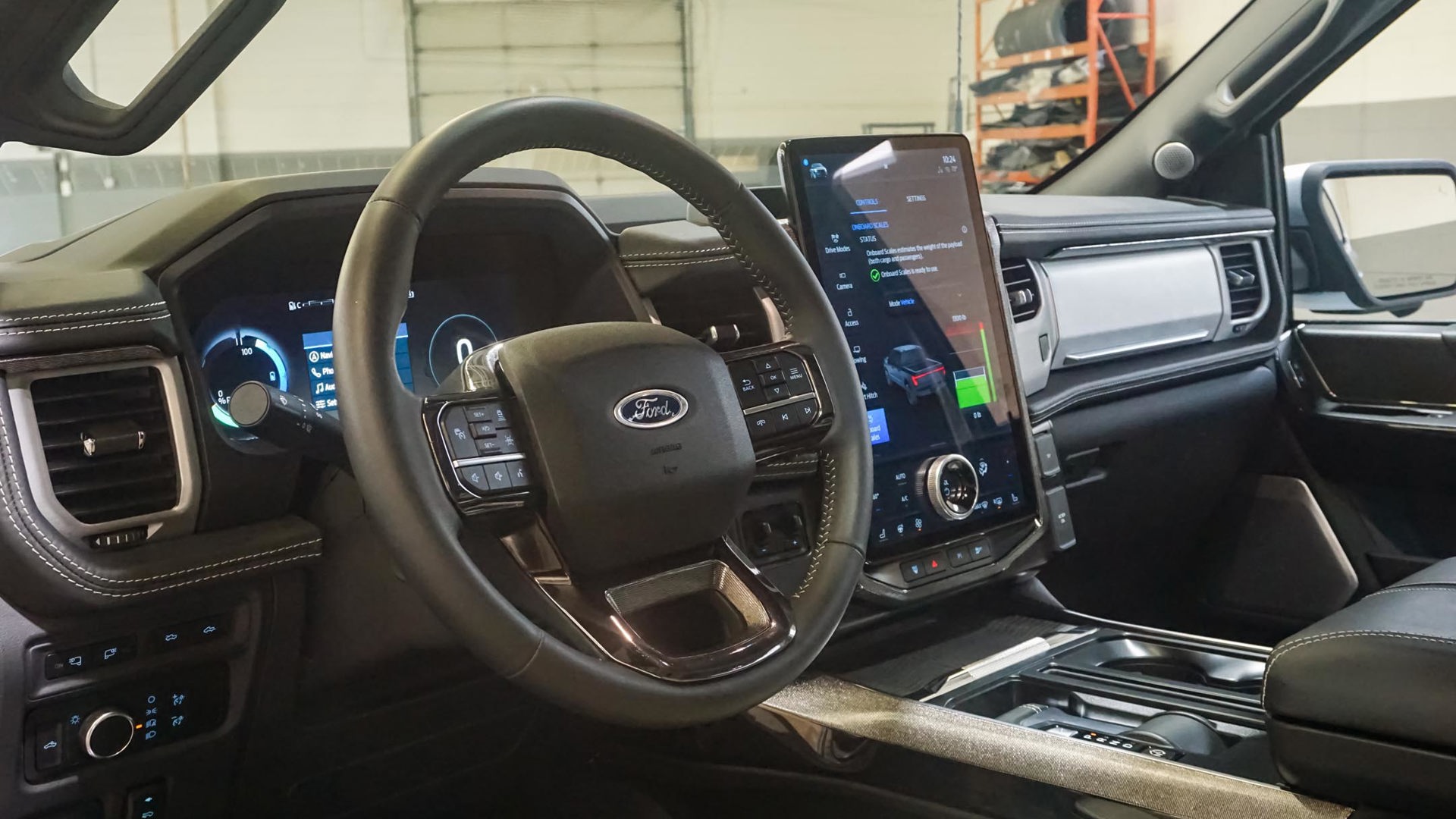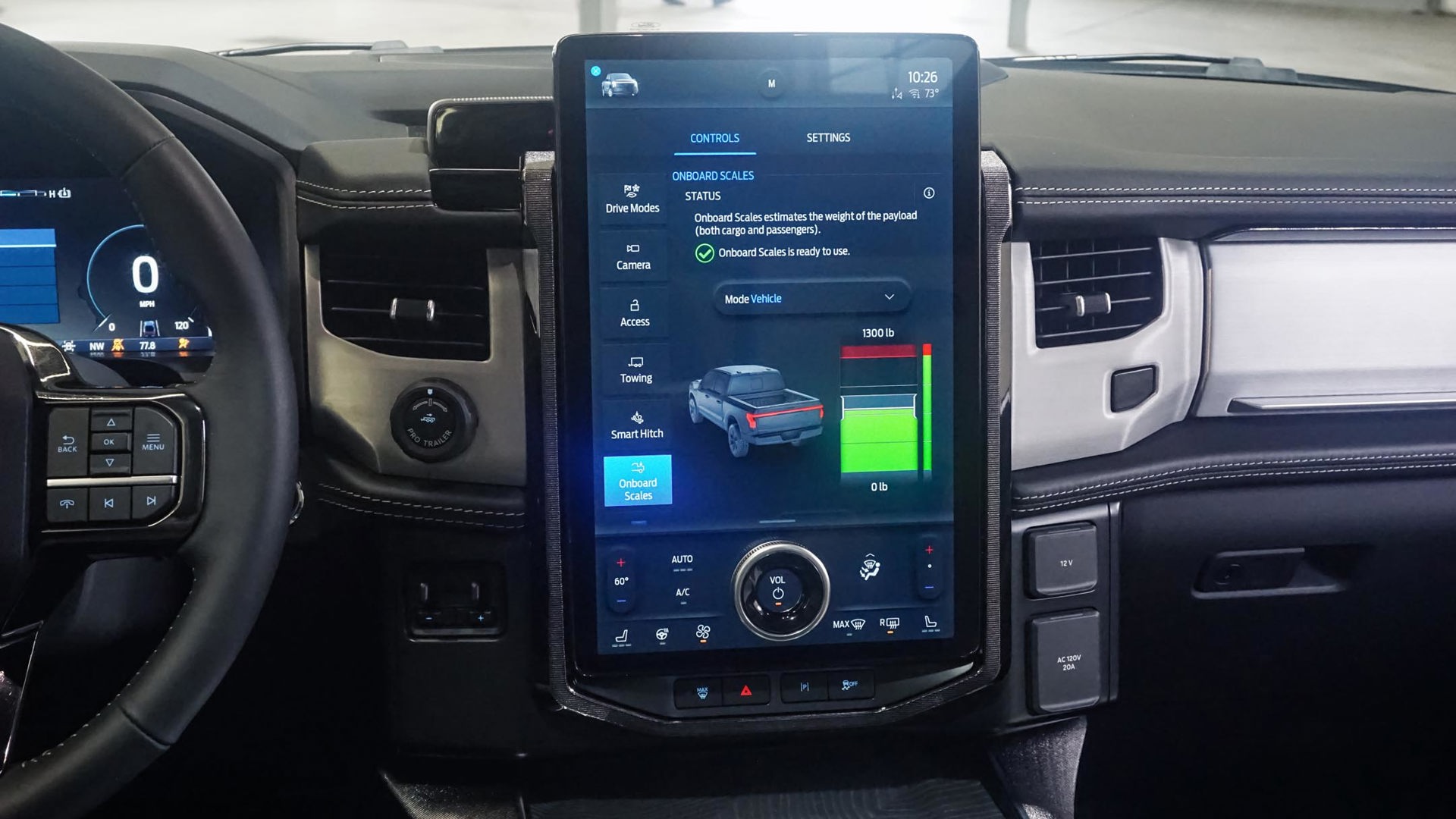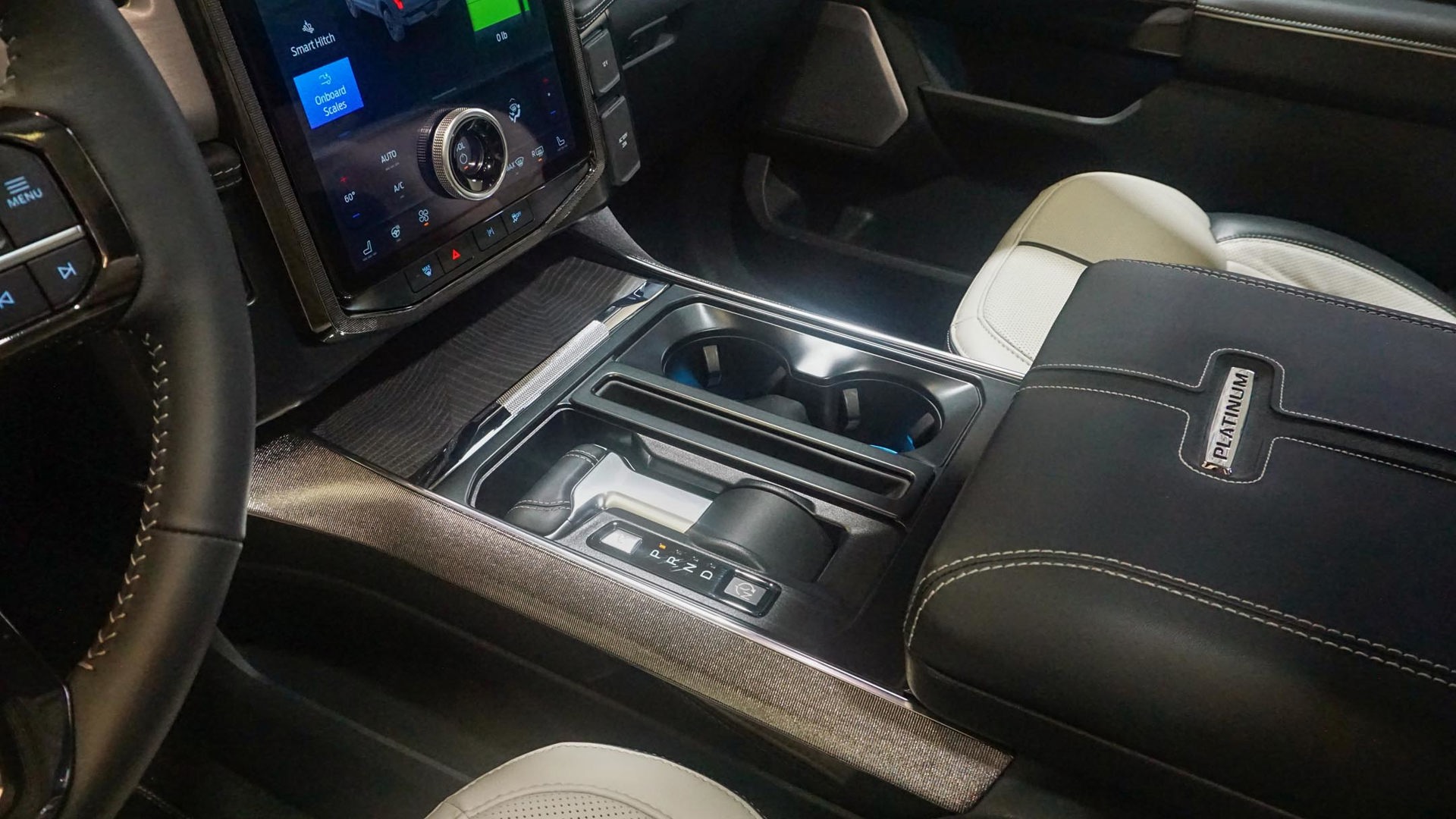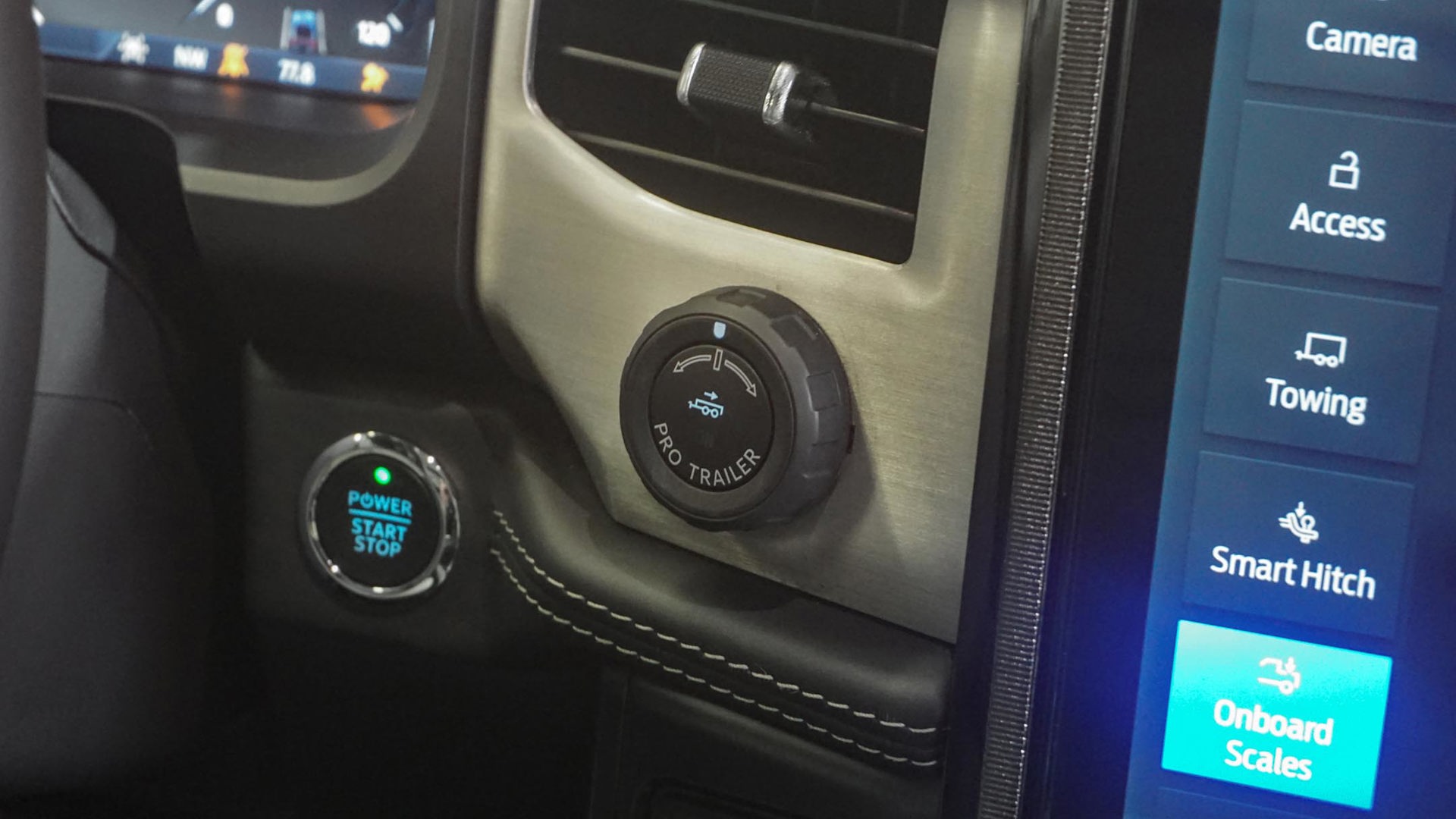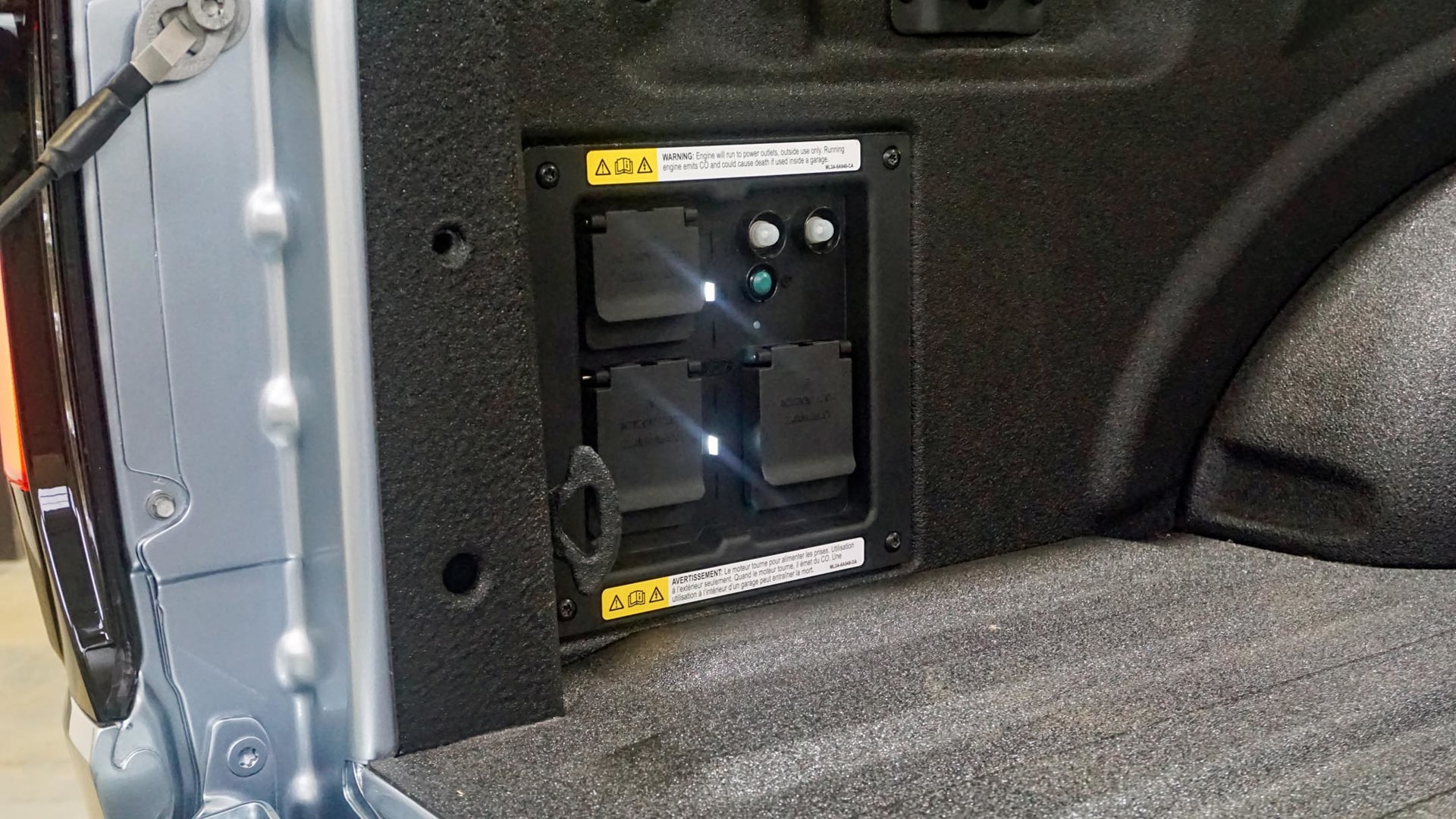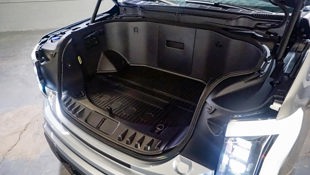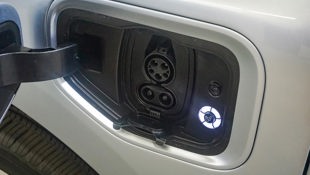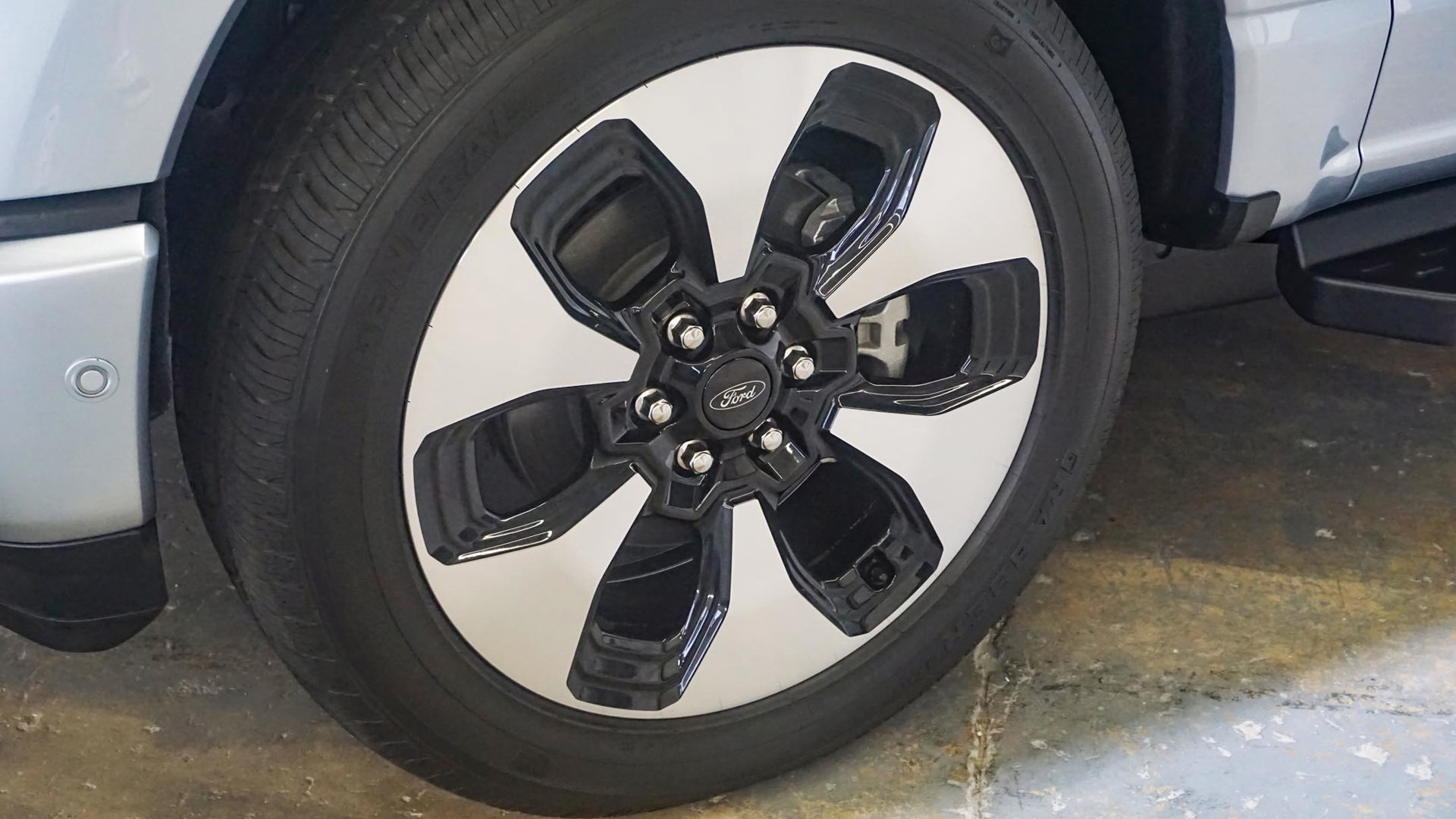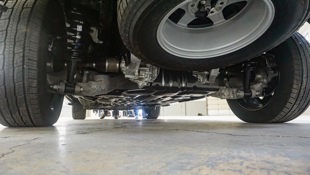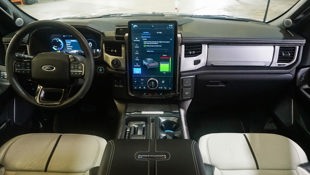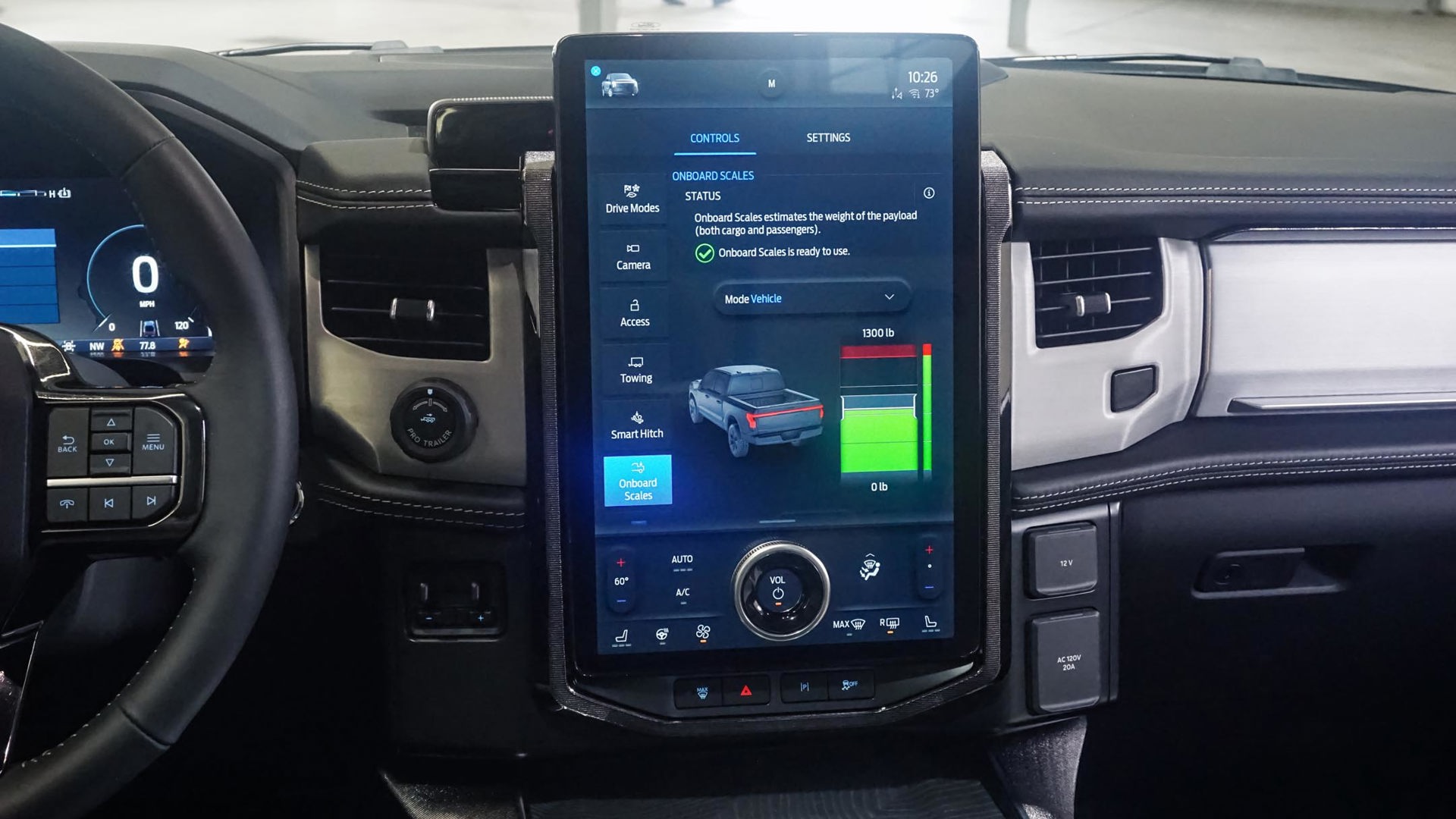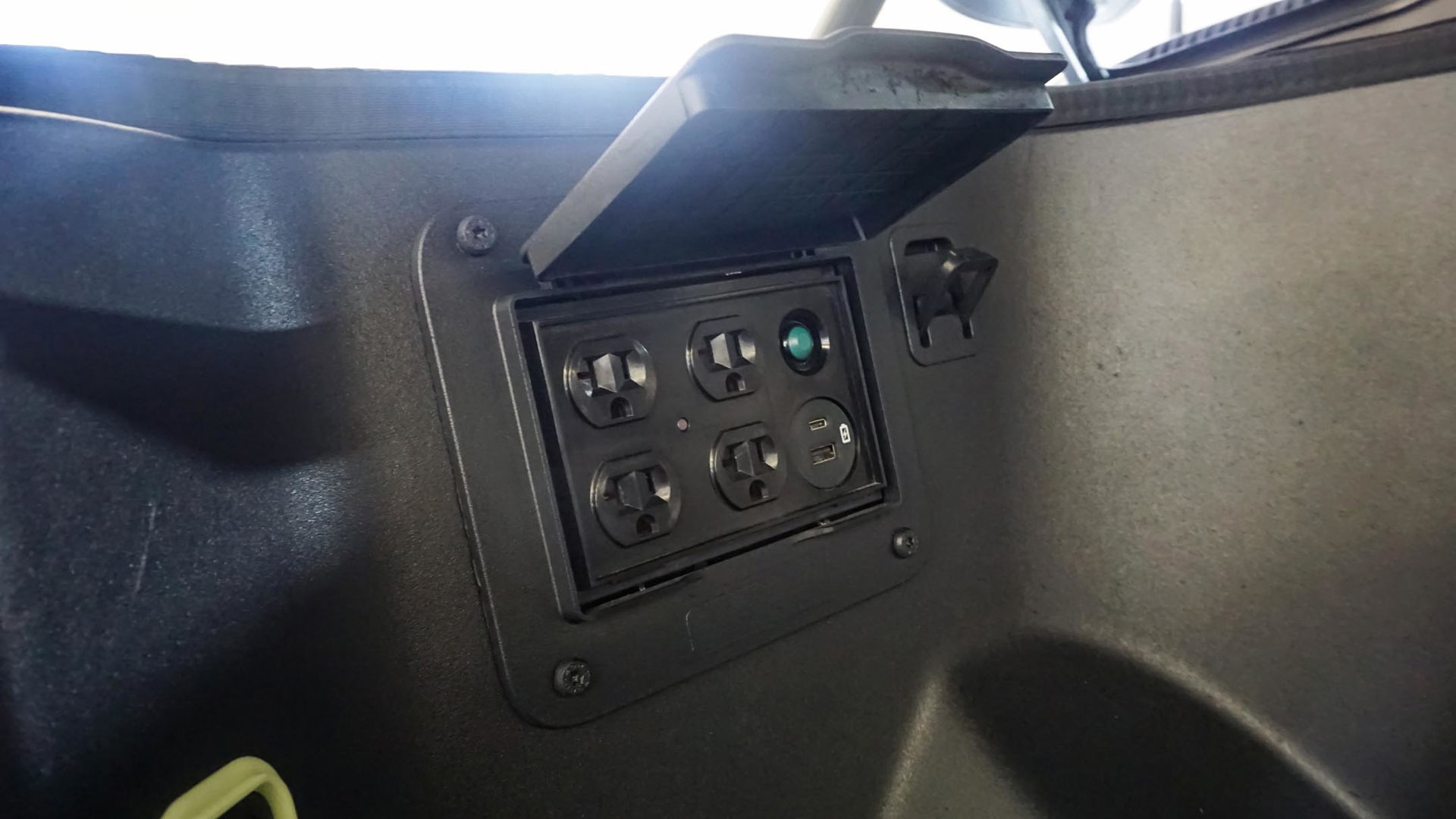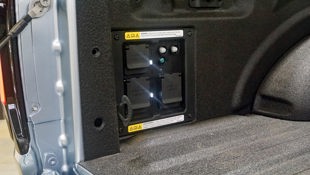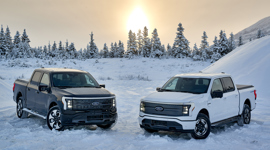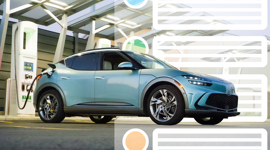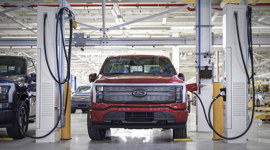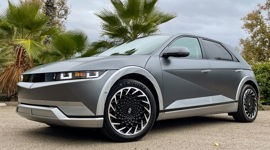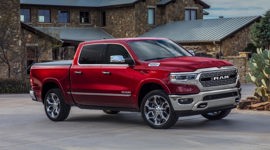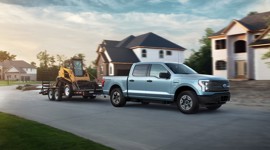We’re less than a year away from Ford officially jumping the queue as the first automaker to bring an electric pickup to market, and the buzz around this truck is very real.
The 2022 Ford F-150 Lightning follows on the heels of the Mustang Mach-E that’s been a resounding success in the eyes of critics, giving the brand an all-electric version of its best-selling model that also happens to be the best-selling vehicle in Canada.
What’s it like? Well, we don’t know yet – but the specs look good: twin electric motors that generate a combined 775 lb-ft of torque, some 4,536 kg (10,000 lb) of projected max towing capacity, and a targeted range of some 483 km with the big battery pack. That’s all impressive stuff, and it makes the Lightning’s prospects as both a pickup truck and a pure electric vehicle (EV) promising.
It’s too early to drive it, but Ford invited us to poke around a prototype that was in town for a brief appearance. Also on hand was the brand’s vehicle line manager in charge of trucks, Joseph Comacchio, whose excitement about the F-150 Lightning was palpable.
“I’m really looking forward to this truck,” he said, the prototype version posturing proudly in the distance. “It is a game-changer.”
Comacchio said the development process never strayed from what this is: a truck first and foremost. While some of the fundamentals were changed in order to adapt it to electrification – the solid rear axle and leaf springs have been swapped for an independent suspension setup, for example – the criteria for the Lightning weren’t altered in any way. It wouldn’t be totally unreasonable for an automaker to shift expectations for an electric truck compared to a gas-powered one, but according to Comacchio, that was never even considered.
“Truck buyers look for capability (and) they look for durability, and it meets all the (same) standards that the traditional F-150 meets without question, and it has the capability of a standard truck,” he said.
Just like the hybrid version of the F-150 that’s currently on sale, this all-electric model comes exclusively as a crew cab with a 5.5-ft bed – the most popular F-150 configuration, according to Comacchio. While the cab itself is shared with the rest of the lineup as a result, every exterior panel is unique to the Lightning (though the resemblance to its siblings remains strong).
While every version of the truck will come with a dual-motor drivetrain that powers all four wheels, Ford has plans for two battery sizes that offer varying driving range and charging times. The standard version has a targeted range of 370 km, with 150-kW fast-charge capability that can put 66 km back in the battery in 10 minutes, and boost the battery from 15 per cent to 80 per cent in 44 minutes. The larger battery, meanwhile, has a targeted range of 483 km, with a Level 3 fast-charger putting 86 km in the battery in 10 minutes. (The so-called Pro model aimed at commercial customers will launch as fleet-only in Canada and come fitted with the smaller of the two battery packs.)
Of course, Ford plans to stuff all kinds of unique features and technology inside this truck, including more 120-volt outlets than the average power bar. Standard in the consumer-grade truck will be a whopping 9.6-kW inverter that allows this truck to operate as a mobile generator, with 10 120-volt outlets – two in the cabin, and four each in the front cargo area and bed – and a 240-volt twist-lock outlet in the bed that can power a camper trailer. (That big inverter will be optional in the commercial-grade truck, with a smaller 2.4-kW unit standard.)
The F-150 Lightning will also offer a unique tow package that integrates all the usual stuff like reverse guidance, blind-spot monitoring that extends the length of a trailer, and trailer brake controller, and also adds a scale system that can calculate how much weight is inside the truck and provide a real-time update on how much towing capacity is left with that payload subtracted. It can also provide navigation directions that follow the most efficient route based on how much weight is being moved.
“Not only does it have really cool tech, it’s a very effective truck,” Comacchio said.
In addition to targeting 3,493 kg (7,700 lb) of towing capacity with the standard battery and 4,536 kg (10,000 lb) with the extended-range version, Ford hopes the former will boast 907 kg (2,000 lb) of payload and the latter 816 kg (1,800 lb). Those numbers are less than some gas-powered F-150 models, but that’s because of the additional weight of the battery and electrical components this truck carries.
However, the Lightning hits back with a feature that addresses an inherent flaw found in every half-ton truck out there: enclosed storage. Without an engine under the hood, the area up front has been opened up to provide some 400 L of water-tight storage. Even so, a drain plug has been incorporated so it can be hosed out if loaded with dirty gear – or better still, used as an ice tub at a tailgate party. (As discussed during this walk-around event, someone will have to come up with a new name, as it would no longer be a tailgate party if the beer – er, pop – is stashed up front.)
Inside – well, it looks and feels like an F-150. It’s just as roomy as a conventionally powered model, so there’s plenty of space inside. Aside from the oversized 15.5-inch touchscreen infotainment system, Ford has wisely chosen to make this all but indistinguishable from a gas truck.
That’s mostly true of the exterior, too, though the lighting elements and lack of a grille set it apart from the rest of the lineup. Still, compared to prototype pickups from other brands, including the Tesla, Canoo, Rivian, and Lordstown Motors, the F-150 Lightning can easily blend in with the rest of traffic rather than standing out like some sort of futuristic dystopian transporter.
Which brings us to those brands. Ford wasn’t nearly as boisterous with its plans to launch an electric truck as some. The rumour mill had long paid lip service to such a truck, but Ford for its part stayed fairly quiet on the matter until it was ready to pull the cover off. According to vehicle line manager Comacchio, it speaks volumes to the brand’s intentions.
“This is a real testament to our company,” he said of delivering the first electric truck to market. “To make an announcement that we’re going to invest in electrification is one thing, but to take the most capable vehicle in our lineup and electrify that is a testament to how serious we are and how committed we are to electrification.”
